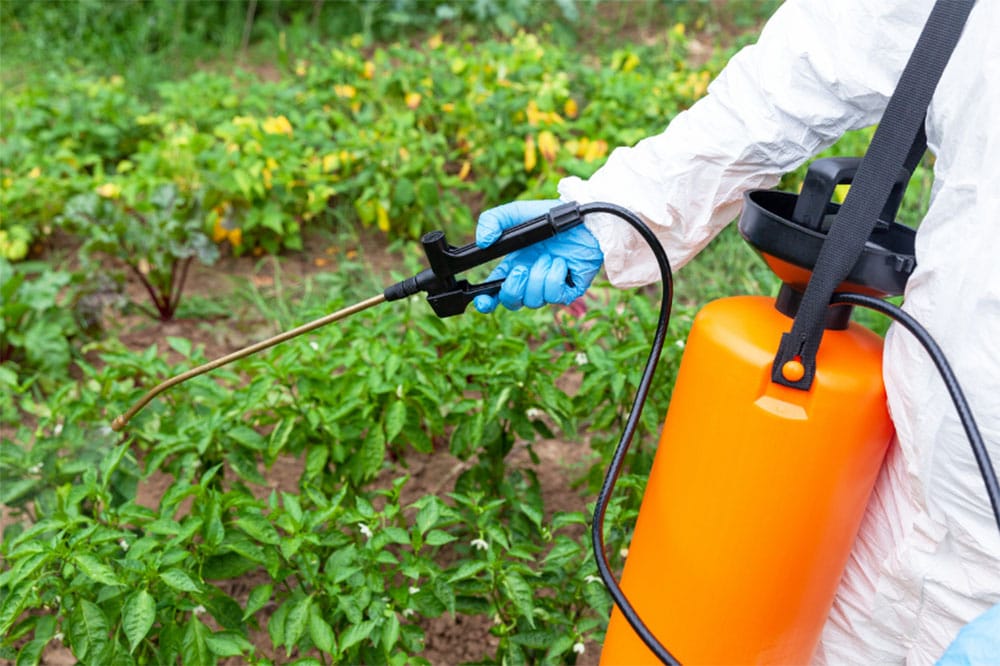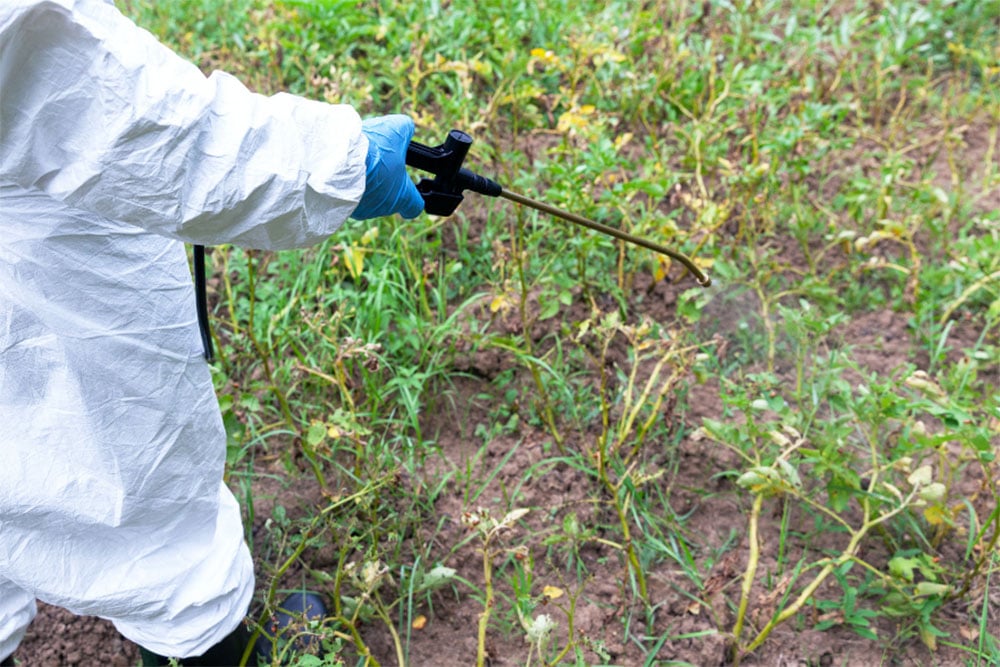If you’re the kind of person who takes pride in growing your vegetables, then you might have battled with the enemy of vegetable growers everywhere, weeds.
Maintaining a well-kept vegetable garden can be a relaxing task, but it can be stressful to preserve, particularly when your vegetables succumb to weeds competing for space.
Weeds are an unfortunate part of nature, as they protect soil from eroding, provide a place for insects to live, and absorb carbon dioxide from the air. They may have a function, but the last place you want them is in your backyard!
Other than looking untidy, weeds fight your vegetables for water, nutrients, and space. This can all make your vegetables deteriorate, as they can’t grow to their full potential.
So, when faced with an onslaught of weeds, you might reach for your nearest weed killer to stop them from growing. But is weed killer safe to use in your vegetable garden?
In this article, we’ve put together some handy information about whether weed killer can be used in a vegetable garden, as well as any potential dangers you should look out for when using a herbicide.
We’ve also listed some alternatives you can use instead of a weed killer, so you can clear out those weeds for good.
Can I Plant Vegetables After Using A Weed Killer?
You can plant vegetables after using a weed killer, but you must make sure that your herbicide is specially made for this use.
A herbicide should only be a last resort in vegetable patches, as preventing weed growth is a better option.
Here are things you must know before reaching for a weed killer.
Some Weed Killers Are Different Than Others
Weed killers, or herbicides, are pesticides that are made to kill plants. There are different types of weed killers on the market, selective herbicides and nonselective herbicides.
Selective herbicides are particular about the plants they kill. They attack some plants, but leave some well alone. On the other hand, non-selective herbicides kill every plant that it touches.
There are some weed killers that you can use for preparing your soil, but there are others that aren’t made for this use at all. These could harm your soil and later, your plants.
If you’re looking for a weed killer for your plot, read the label carefully. You’ll have to make sure that the herbicide can be used safely in vegetable gardens.
Weed Killers Can Kill New Plants
Weed killers can break down in the soil, as water and microbes start to decay the product.
Before planting your new seeds, you’ll have to wait until the weed killer has fully broken down, so they don’t affect your new vegetables. The product label should tell you if you have to wait before you start planting, and how long you’ll have to wait for.
The amount of time you’ll have to wait might differ for certain vegetables. You might need to wait a few weeks before planting tomatoes, but only a couple of days before planting peppers.
Some herbicides can last ages in soil, which shouldn’t be used for preparing your patch at all.
Weed Killers Can Kill Nearby Plants
Certain weed killers, depending on their chemical composition, can move and affect plants that are nearby.
Some might stay in one place, but other herbicides can migrate downwards into the soil, or spread upwards into the air. Again, read the label to see how your product will affect plants nearby.
Using A Weed Killer
Use a Glyphosate-based weed killer 2-3 weeks before planting your vegetables. As before, always read the label to see if your product is suitable for your needs. Preventing weed growth is a much better option, so only use a herbicide as a last measure.
Prevention Is Better Than A Cure
Don’t procrastinate! Keeping weeds under control can be a stressful, time-consuming process. Once you see a few weeds crop up, it’s easy to tell yourself you’ll sort them out later.
But then, after a week or two, you’ll come back to a large mess of weeds that’ll take hours to sort out.
However, if you spend a few minutes each day tending to your vegetable patch, you won’t have weeds pile up, as you’ll get to them there and then. This will save you lots of time in the long run!
Take 10 minutes to care for your yard each day. An added plus is that you’ll be getting in some regular daily activity, making you healthier over time.
Here are some herbicide alternatives you can use to prepare your vegetable garden, protecting it from weeds.
Mulch
Mulch can block light from getting to weeds, preventing them from growing. Newspaper, wood chips, and straw can all work.
Lay a thick line of mulch between each vegetable row and freshen when needed. Keep your mulch 2-3 inches deep, as larger amounts could let light through.
Weed barriers
Some vegetables, like tomatoes and cucumbers, can be grown through plastic weed barriers. Plastic confines heat from the soil, preventing plants that don’t develop in warmer soil from growing.
Before planting, lay a black plastic barrier over your soil, cutting holes in it so your vegetables can grow through.
Look out for weeds that grow under the plastic, and remember that plastic doesn’t decompose, so do throw away the barrier afterward.
Plant Your Vegetables Closer Together
Reducing the spaces between your vegetables can stop weeds in their tracks. However, this can make your vegetables smaller. Don’t try this method with vegetables susceptible to foliar disease, as it could easily spread to your other plants.
Reduce the size slowly every year, observing the results. If they grow slower and look less healthy, go back and increase the space again.
Use Your Hands Or A Hoe
If you see weeds that are pre-seed, you can use either your hands or a hoe to pull them out. But, if the weeds have seed heads, only use your hands to remove them.
A hoe will spread them out and plant them back into the soil again. Remember, you only need to tend to your backyard patch a few minutes a day. Don’t let weeds build-up, or you’ll have a giant mess to take care of later.


